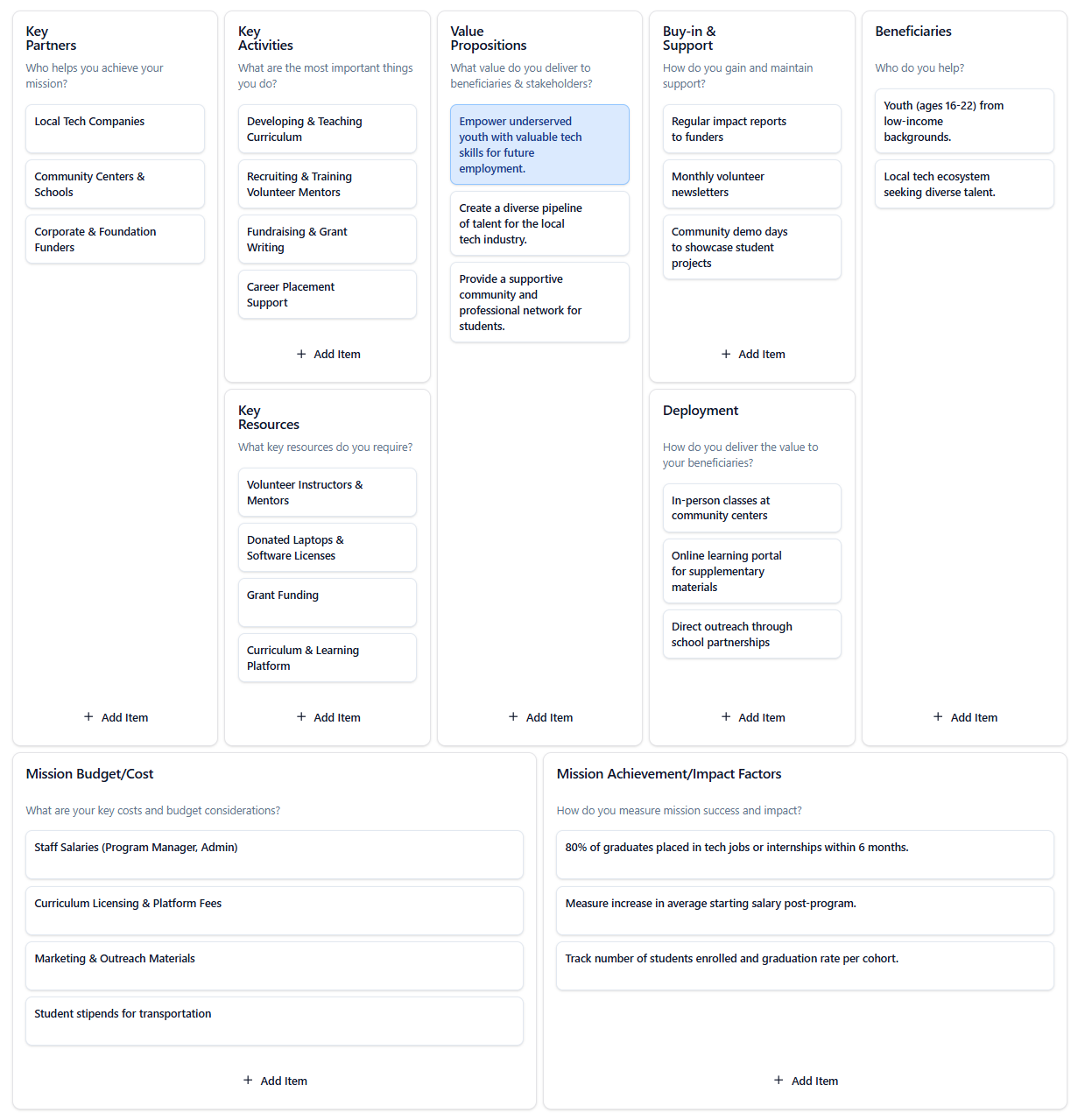Social Enterprise
Code for All (Non-Profit)
A non-profit organization that provides free coding bootcamps and mentorship to underserved youth.

Analysis & Interpretation
Background
This Mission Model Canvas for ‘Code for All’ outlines a non-profit focused on creating pathways to economic opportunity for underserved youth. The model is a two-sided platform, serving both students (beneficiaries) and local tech companies (partners and eventual employers).
Key Strategic Insights
- Dual Value Proposition is Key: The model has two distinct ‘Value Propositions’: one for students (’empower with tech skills’) and one for companies (‘create a diverse talent pipeline’). The long-term success of the mission depends on successfully serving both stakeholders.
- Partners are a Strategic Resource: ‘Local Tech Companies’ are not just ‘Key Partners’; they are a critical ‘Key Resource’. They provide mentors, funding, and, most importantly, the jobs that fulfill the mission’s ultimate goal. Nurturing these relationships is a core activity.
- Impact is Measured by Outcomes, Not Outputs: The ‘Mission Achievement’ metrics focus on outcomes (‘80% of graduates placed in tech jobs’) rather than just outputs (‘number of students enrolled’). This is a sign of a mature, impact-focused organization.
Strategic Summary
This is a strong, well-aligned mission model. The strategy creates a virtuous cycle: corporate partners provide resources and hire graduates, and the success of those graduates reinforces the value proposition for future students and partners. The biggest challenge will be balancing the quality of the education with the need to scale. The immediate focus should be on strengthening partnerships with tech companies to ensure the career placement pipeline remains robust.
How This Was Built
This canvas was created to demonstrate how organizations can define, communicate, and validate their mission strategies using structured thinking and AI support.

AI Guidance for Mission Definition
The AI Strategy Assistant helped generate ideas for the Mission Objectives, Beneficiaries, and Value Propositions, clarifying who benefits and why the mission matters.

Visual Clarity Through Color and Tags
Colors were used to distinguish impact areas, resources, and delivery channels, while tags connected related goals and success metrics for easy tracking.

AI Review for Alignment
After completing the layout, the AI Analysis Tool assessed how well each activity aligned with the stated mission, identifying which assumptions needed validation.
Bring This Example to Life
Load this Mission Model Canvas in the workspace to map your organization’s purpose, refine goals, and use AI insights to strengthen mission alignment and accountability.
